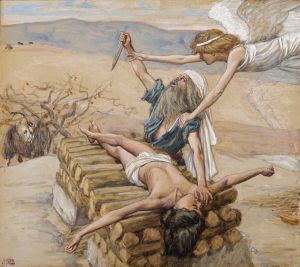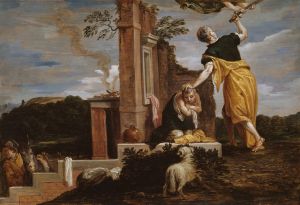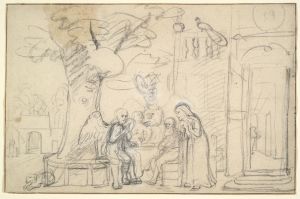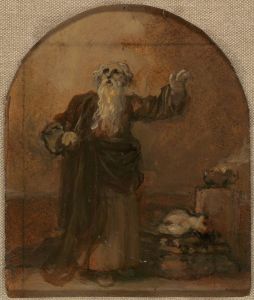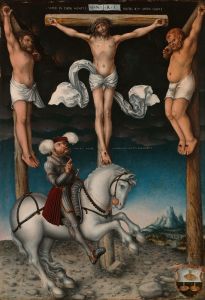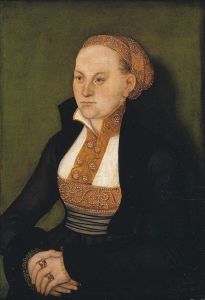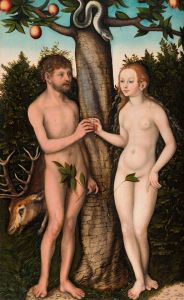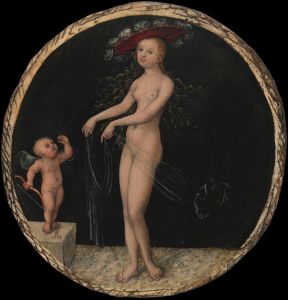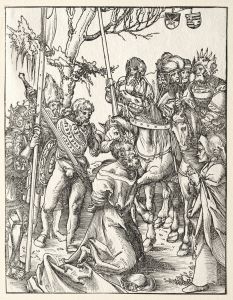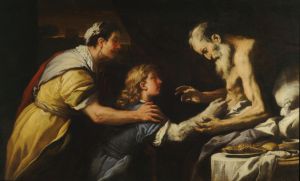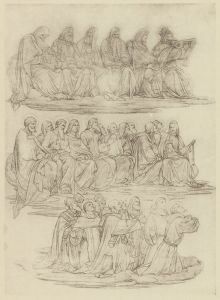
The Sacrifice of Abraham
A hand-painted replica of Lucas Cranach the Elder’s masterpiece The Sacrifice of Abraham, meticulously crafted by professional artists to capture the true essence of the original. Each piece is created with museum-quality canvas and rare mineral pigments, carefully painted by experienced artists with delicate brushstrokes and rich, layered colors to perfectly recreate the texture of the original artwork. Unlike machine-printed reproductions, this hand-painted version brings the painting to life, infused with the artist’s emotions and skill in every stroke. Whether for personal collection or home decoration, it instantly elevates the artistic atmosphere of any space.
Lucas Cranach the Elder, a prominent German Renaissance painter, created "The Sacrifice of Abraham," a work that exemplifies his distinctive style and the religious themes prevalent during his time. Cranach was known for his ability to blend Northern European artistic traditions with the emerging Renaissance ideals, and this painting is a testament to his skill in narrative and composition.
"The Sacrifice of Abraham" depicts the biblical story from the Book of Genesis, where God tests Abraham's faith by asking him to sacrifice his son Isaac. At the last moment, an angel intervenes, stopping Abraham and providing a ram to sacrifice instead. This story has been a popular subject in Christian art, symbolizing faith, obedience, and divine intervention.
Cranach's interpretation of this scene is notable for its dramatic composition and attention to detail. The painting captures the moment of divine intervention with the angel appearing to Abraham, who is poised to sacrifice Isaac. Cranach's use of color and light enhances the emotional intensity of the scene, drawing the viewer's attention to the central figures. The expressions on the faces of Abraham and Isaac convey a range of emotions, from fear and resignation to relief and gratitude, reflecting the complexity of the narrative.
Cranach's style is characterized by his precise line work and the use of vibrant colors, which are evident in this painting. The figures are rendered with a clarity and elegance that highlight Cranach's mastery of form and anatomy. The landscape in the background, though secondary to the main action, is meticulously detailed, providing a serene contrast to the drama unfolding in the foreground.
Lucas Cranach the Elder was a contemporary of Albrecht Dürer and was deeply influenced by the religious and cultural changes of the Reformation. He was a close friend of Martin Luther and produced numerous works that supported the Protestant cause. While "The Sacrifice of Abraham" is a biblical scene, it also reflects the broader religious context of Cranach's time, where art was used as a means of religious expression and communication.
The painting is part of Cranach's broader oeuvre, which includes portraits, altarpieces, and mythological scenes. His workshop was highly productive, and he was known for his ability to produce works that were both artistically innovative and commercially successful. "The Sacrifice of Abraham" is a fine example of Cranach's ability to convey complex theological themes through accessible and engaging imagery.
Today, Lucas Cranach the Elder is recognized as one of the leading figures of the Northern Renaissance, and his works continue to be studied for their artistic and historical significance. "The Sacrifice of Abraham" remains an important piece for understanding the intersection of art, religion, and society in the early 16th century.





